
Filter News
Area of Research
- (-) Advanced Manufacturing (8)
- (-) National Security (38)
- (-) Neutron Science (131)
- (-) Nuclear Science and Technology (40)
- Biology and Environment (119)
- Biology and Soft Matter (1)
- Building Technologies (1)
- Computational Biology (1)
- Computational Engineering (3)
- Computer Science (16)
- Electricity and Smart Grid (3)
- Energy Frontier Research Centers (1)
- Energy Science (147)
- Fuel Cycle Science and Technology (1)
- Functional Materials for Energy (1)
- Fusion and Fission (35)
- Fusion Energy (13)
- Isotope Development and Production (1)
- Isotopes (6)
- Materials (158)
- Materials Characterization (1)
- Materials for Computing (21)
- Materials Under Extremes (1)
- Mathematics (1)
- Nuclear Systems Modeling, Simulation and Validation (2)
- Quantum information Science (7)
- Sensors and Controls (1)
- Supercomputing (135)
- Transportation Systems (1)
News Topics
- (-) Advanced Reactors (13)
- (-) Big Data (8)
- (-) Clean Water (2)
- (-) Computer Science (34)
- (-) Environment (13)
- (-) Grid (6)
- (-) Materials Science (31)
- (-) Nanotechnology (11)
- (-) Neutron Science (122)
- (-) Nuclear Energy (42)
- (-) Physics (11)
- 3-D Printing/Advanced Manufacturing (31)
- Artificial Intelligence (19)
- Bioenergy (12)
- Biology (11)
- Biomedical (18)
- Biotechnology (2)
- Buildings (1)
- Chemical Sciences (5)
- Composites (4)
- Coronavirus (13)
- Cybersecurity (20)
- Energy Storage (8)
- Exascale Computing (1)
- Fossil Energy (1)
- Frontier (2)
- Fusion (11)
- High-Performance Computing (6)
- Hydropower (1)
- Isotopes (5)
- Machine Learning (16)
- Materials (20)
- Mathematics (1)
- Microscopy (3)
- Molten Salt (4)
- National Security (35)
- Partnerships (5)
- Polymers (1)
- Quantum Computing (1)
- Quantum Science (8)
- Security (12)
- Simulation (1)
- Space Exploration (9)
- Summit (7)
- Transportation (7)
Media Contacts
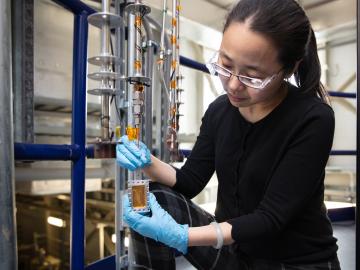
Researchers at the Department of Energy’s Oak Ridge National Laboratory, Pacific Northwest National Laboratory and Washington State University teamed up to investigate the complex dynamics of low-water liquids that challenge nuclear waste processing at federal cleanup sites.
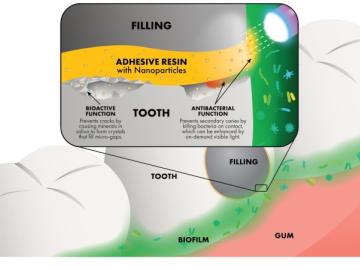
To help address the issue of dental restoration, Oak Ridge National Laboratory researchers are using neutron scattering to study how nanoparticles with antibacterial properties can be added to adhesive resins, which are used by dentists to strengthen the bond between a tooth and its polymer composite filling.

Ionic conduction involves the movement of ions from one location to another inside a material. The ions travel through point defects, which are irregularities in the otherwise consistent arrangement of atoms known as the crystal lattice. This sometimes sluggish process can limit the performance and efficiency of fuel cells, batteries, and other energy storage technologies.
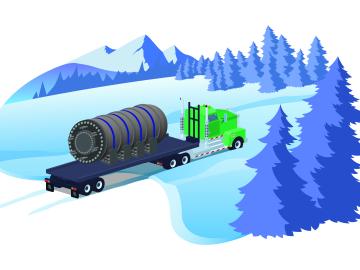
Oak Ridge National Laboratory scientists are evaluating paths for licensing remotely operated microreactors, which could provide clean energy sources to hard-to-reach communities, such as isolated areas in Alaska.

Scientists at the Department of Energy’s Oak Ridge National Laboratory are working to understand both the complex nature of uranium and the various oxide forms it can take during processing steps that might occur throughout the nuclear fuel cycle.

OAK RIDGE, Tenn., March 20, 2019—Direct observations of the structure and catalytic mechanism of a prototypical kinase enzyme—protein kinase A or PKA—will provide researchers and drug developers with significantly enhanced abilities to understand and treat fatal diseases and neurological disorders such as cancer, diabetes, and cystic fibrosis.

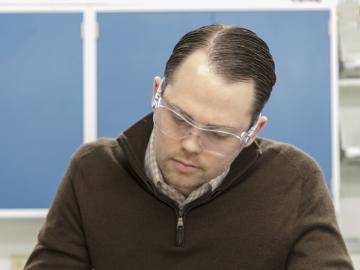
Oak Ridge National Laboratory is using ultrasonic additive manufacturing to embed highly accurate fiber optic sensors in heat- and radiation-resistant materials, allowing for real-time monitoring that could lead to greater insights and safer reactors.
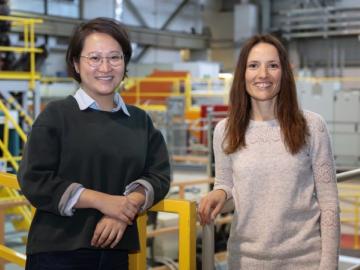
Yue Yuan, a second-year PhD student at NC State University’s Wilson College of Textiles, is working to create textiles that filter carbon dioxide (CO2) by using the latest scientific techniques in synthesis and imaging. Known as biocatalytic textiles, these materials could serve as sustainable scrubbers for CO2 capture by using enzymes trapped in bio-based polymers to catalyze the hydration of CO2.
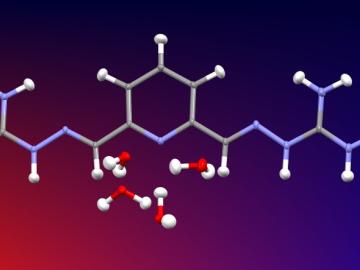
Researchers used neutron scattering at Oak Ridge National Laboratory’s Spallation Neutron Source to investigate the effectiveness of a novel crystallization method to capture carbon dioxide directly from the air.


